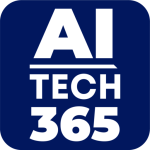Machine learning is a field of study that uses algorithms to improve the performance of a computer system by teaching it to do things on its own. The more data that is used to train the ML model, the better the model will be at performing a task.
There are a few different types of ML: supervised, unsupervised, and reinforcement learning. Supervised learning is when the machine is given a set of training data and the goal is to learn how to classify it. Unsupervised learning is when the machine is given a set of data and the goal is to find patterns in it. Reinforcement learning is when the machine is given a set of data and the goal is to find a way to get the reward for completing a task.
This blog discusses all about machine learning and how it can be used to revolutionize industries.
Benefits of Machine Learning
There are many benefits to using ML, and quantum machine learning is one of the most promising fields of AI currently. Given below are five major advantages of ML:
- It can improve the accuracy of predictions made by a computer.
- It can automate the analysis of large data sets.
- It can help identify new patterns in data.
- It can boost the speed and accuracy of decision-making.
- It can help us learn from data sets and improve our predictions in the future.
Choosing the Right Machine Learning Tools for Your Project
There are a lot of different machine-learning tools out there, and it can be hard to figure out which ones to use for your project.
Here are seven tips to help you choose the right ones.
- Object recognition:
One of the most important things to consider when choosing a machine learning tool is how well it can recognize objects. If you’re trying to learn how to identify objects in pictures, for example, an ML tool that uses deep learning is going to be more accurate than one that uses less sophisticated algorithms.
- Regularization:
Regularization is a process that helps make the data more consistent. It’s usually used to reduce the variance in the data, which makes it easier for the ML algorithm to learn from.
- Scalability:
Machine learning algorithms are usually scalable, which means that they can be used to learn from a large number of data sets.
- Accuracy:
ML algorithms need to be precise in order to make accurate predictions. If the algorithm is not accurate, it will not be able to learn from the data set and subsequently, will not be able to improve over time.
- Features:
Some machine learning tools have more features than others. This means that they’re more powerful and allow you to do more with the data.
- Speed:
The speed at which an ML tool can process and analyze data is crucial, especially when dealing with large datasets. Faster processing means quicker insights and decision-making, which can greatly enhance productivity.
- Convenience:
Consider the user-friendliness of the ML tool. A tool that is intuitive and easy to navigate can save you time and effort in the learning process. Look for tools with clear documentation and user-friendly interfaces. Major digital businesses are utilizing machine learning, with Google employing it in more than 200 of its products.
By carefully considering these factors, you can choose the right machine-learning tools for your project and maximize their effectiveness. Remember, each project may have unique requirements, so it’s important to evaluate every tool based on how well it aligns with your specific needs.
Essential Tools for Machine Learning
To efficiently design, train, and deploy models, machine learning requires a combination of tools and technology. Five of the most essential tools for ML are Python, Keras, Jupyter Notebook, TensorFlow, and sci-kit-learn.
- Python: Python is a well-liked programming language for machine learning due to its simplicity, substantial library, and community support. It offers commonly used libraries for ML tasks like Pandas, Scikit-learn, and NumPy.
- Jupyter Notebook: Jupyter Notebook is an interactive coding environment that enables code writing and execution, data visualization, and work documentation. It is frequently employed for ML model prototyping and testing.
- Scikit-learn: It is a robust machine learning package for Python that offers a variety of methods and tools for applications, including classification, regression, clustering, and dimensionality reduction. Additionally, it provides tools for evaluating models and preprocessing data.
- TensorFlow: TensorFlow is a Google-developed open-source machine learning framework. It is frequently used to construct and train deep learning models, particularly neural networks.
- Keras: It is a high-level neural networks API that Uses TensorFlow as its foundation. By offering a user-friendly interface and abstraction, Keras makes the process of creating and training deep learning models simpler.
While each of these tools has its own advantages and disadvantages, it is critical to choose the right one for the task at hand.
Some popular machine learning tools are scikit-learn, TensorFlow, and PyTorch.
To Sum Up
Machine learning is a subset of artificial intelligence (AI) that allows computers to learn from data without explicit programing. There are many different sorts of ML, including regularization machine learning, quantum machine learning, and ML tools. It allows you to train and test models on your own data. However, the technology is still in its nascent stages and much research is needed in order to improve its accuracy and efficacy.
The discipline of ML thrives on ongoing innovation, collaboration, and multidisciplinary study. The potential of ML for propelling additional discoveries and game-changing solutions is enormous as researchers, engineers, and practitioners push the envelope of practical objectives.
ML could possibly resolve difficult issues and influence a more intelligent and automated future because of its capacity to learn from data and adapt over time. Society has already benefited greatly from machine learning, and this trend will only grow further.

